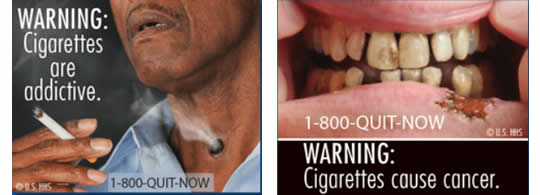Gory Tobacco Warnings Doomed to Fail
The FDA has released the images that will be added to cigarette packages. Instead of the old text boxes, the new labels are graphic reminders of the health consequences of smoking. The FDA calls the new labels, which will debut next year, “the first change in cigarette warnings in more than 25 years” and says they are a “significant advancement in communicating the dangers of smoking.” Those statements may be true, but the neuromarketing evidence says that smokers will adapt to the new labels and that even these gory images will end up triggering craving for tobacco.
In Are Tobacco Warnings Really Ads? I discussed research that used brain scans to show that viewing a tobacco warning label lit up an area of smokers’ brains associated with craving. The research was described in Buyology by Martin Lindstrom, who noted in a TV interview, “We couldn’t help but conclude that those same cigarette warning labels intended to reduce smoking, curb cancer, and save lives had instead become a killer marketing tool for the tobacco industry.”
While calling gruesome labels a “marketing tool” is perhaps a bit over the top, the conclusion is that smokers quickly become accustomed to even graphic warnings. Eventually, these warnings become as much of the cigarette package “trade dress” as the distinctive Marlboro Red.
I don’t think these images will actually increase the desirability of smoking, and perhaps a few non-addicts will be dissuaded from starting. As repulsive as we find the images, though, we shouldn’t expect them to have much impact on long-time smokers.

